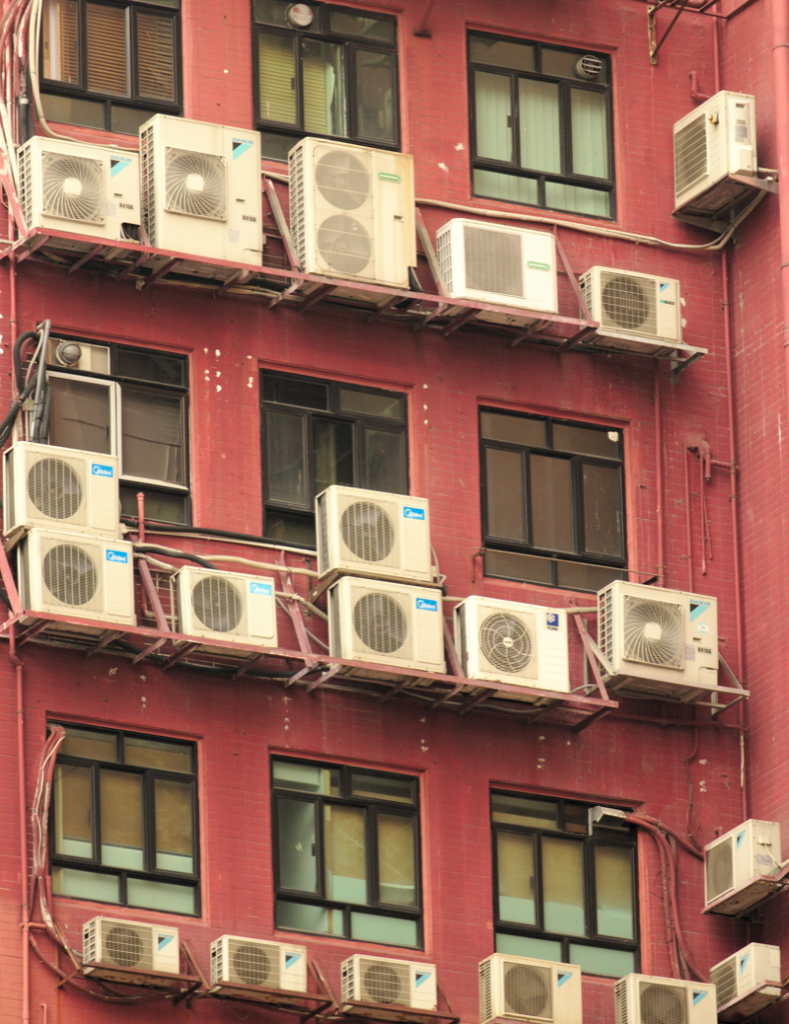
Look around and think ahead.
- Devika Bakshi
Assumptions about the Holocene climate have been engineered into everything we do, down to our civilization’s most basic infrastructure.
Consider a road just before dawn. This road is made of asphalt, an aggregate material in which sand and stone are bound together by bitumen, a sticky, viscous residue from oil or coal. The road is five years old, still smooth, and quite black.
If you could look inside the road, you would see that it is made up of molecules and that these molecules are vibrating. The asphalt’s temperature is a measure of the average speed of these vibrations. After a dark night, the road and the air above it are the same temperature.

The sun is coming up now. What will happen when sunlight hits this road?
Sunlight brings both illumination and radiant heat to the earth. It streams through Earth’s atmosphere, losing a bit of energy along the way. On cloudy days, a lot of sunlight is reflected back off of the white clouds into space, but on this clear day, the sun’s rays hit the road in full force.
Because the road is dark, it absorbs almost all of the light. Sunlight slams into the molecules in the road’s surface, causing them to move faster and faster. The road quickly becomes warmer than the surrounding air.
As the day goes on, the road and the nearby dirt, plants, animals, and buildings continue to warm up with the sun’s energy. Heat moves from warmer objects to colder ones. The heat from their surfaces both warms the surrounding air and sends radiation back skyward.
This radiation from the surface is in a different spectrum than sunlight, and instead of streaming out into space, more of the earth’s heat gets trapped by the atmosphere, much like a coat or blanket captures some of the heat that comes off of your body. The same amount of energy is entering the atmosphere as in the past, but less is escaping.
The molecules in the atmosphere that trap the most radiation are water vapor (H2O), methane (CH4), nitrous oxide (N2O), and carbon dioxide (CO2). On this day it is humid, full of H2O, so the air holds much of the heat from the surface. In addition, the atmosphere has more CO2, CH4, and N2O than it did five years ago when the road was poured out, and much more than when the standards for road construction in this area were established. This may be a problem for our road.

Bitumen makes asphalt smooth in part because it isn’t actually solid. Even at low temperatures it remains viscous, a liquid that barely moves but is a bit flexible and even springy. In liquids like bitumen, molecules are not fixed in place, they have more room to move. As the road continues to take in energy from the sunlight, its surface molecules move more and more.
The once-sturdy, semi-solid bitumen is becoming looser, more flexible, and more obviously liquid. Now when cars and trucks drive on the asphalt, the road gives, squishes, and grooves. The day continues to heat up, breaking records. As the temperature rises, the road degrades, becoming softer, gooey and more malleable. These are not the conditions for which this road was designed.
Extreme heat is not just challenging the road. The nearby buildings were built with designs, materials, and systems to handle a specific range of weather conditions, and today’s heat is outside of that range.
As the temperature passes the planned-for ranges, their systems are working harder, their materials are also facing strain, and problems are developing. Similarly, all forms of life, including people, face new challenges, some of them critical. They evolved for life in this place under a cooler, stable climate. How will they fare in a future with far more heat?